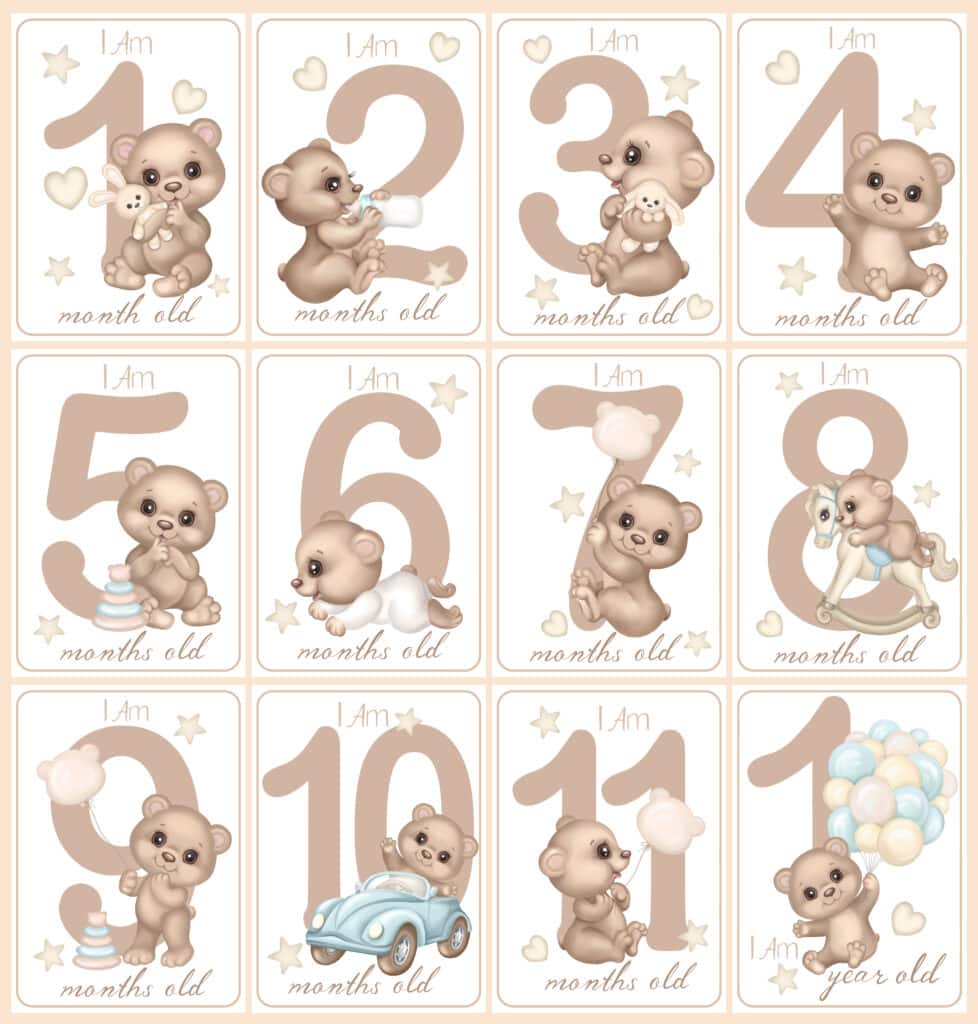Sound chart for speech development is helpful because children typically develop speech sounds in a predictable pattern usually from the time of birth to around 8 years old, though individual variations are common.
Speech Mastery is attained when a child is producing speech sounds through the coordination of the movements of the lips, tongue, jaw, and vocal tract.
Speech sounds can be categorized into three groups:
- Early-developing sounds (2-3 years): p, b, m, n, h, w, d
- Middle-developing sounds (3-5 years): t, k, g, f, v, ng, y
- Late-developing sounds (5-8 years): s, z, l, r, sh, ch, j, th
Speech sound development charts serve as a general guide for parents and educators. It is important to remember that these charts represent average ages of acquisition, and individual children may develop at different rates.
Speech Sound Acquisition Table
| Age (average) | Sound | Example word |
|---|---|---|
| 2-3 years | p | pat |
| 2-3 years | b | bat |
| 2-3 years | m | mat |
| 3-4 years | t | top |
| 3-4 years | k | cat |
| 4-5 years | f | fan |
| 5-6 years | s | sun |
| 6-7 years | r | run |
| 7-8 years | th | thin |
Comprehensive Speech Sound Development Chart
| Age range | Developmental milestones | Common errors | Possible implications | Expected intelligibility |
|---|---|---|---|---|
| 0-6 months | Cooing, laughing | N/A | Hearing loss | N/A |
| 6-12 months | Babbling | N/A | Developmental delay | N/A |
| 1-2 years | First words | Sound omissions | Language delay | 25-50% |
| 2-3 years | 2-3 word phrases | Fronting | Articulation disorder | 50-75% |
| 3-4 years | Simple sentences | Stopping | Phonological disorder | 75-90% |
| 4-5 years | Complex sentences | Cluster reduction | Apraxia of speech | 90-100% |
| 5-6 years | Fluent speech | Gliding | Fluency disorder | 100% |
| 6-7 years | Mastery of most sounds | Lisping | Residual errors | 100% |
| 7-8 years | Adult-like speech | N/A | Persistent errors | 100% |
Detailed Breakdown by Age Group
2-3 Years (24-35 months)
At this age, children are rapidly expanding their vocabulary and beginning to form simple phrases. Their speech is becoming more intelligible to unfamiliar listeners.
Expected intelligibility: 50-75%
Sounds acquired: p, b, m, n, h, w, d
Examples: “pat”, “ball”, “mom”, “no”, “hat”, “wet”, “dog”
3-4 Years (36-47 months)
Children at this age are using longer sentences and their speech is becoming clearer. They may still struggle with some sounds, but overall intelligibility is improving[1].
Expected intelligibility: 75-90%
Sounds acquired: t, k, g, f, ng, y
Examples: “top”, “kite”, “go”, “fan”, “sing“, “yes”

4-5 Years (48-59 months)
Speech becomes much clearer during this period, with most people able to understand the child’s speech. Some later-developing sounds may still be challenging[1].
Expected intelligibility: 90-100%
Sounds acquired: v, j, ch, l
Examples: “van”, “jump”, “chair”, “lamp”
5-6 Years (60-71 months)
By this age, children should be able to produce most speech sounds correctly, though some of the later-developing sounds may still be challenging[1].
Expected intelligibility: 100%
Sounds acquired: s, z, sh, zh
Examples: “sun”, “zoo”, “shoe”, “measure”
6-7 Years (72-83 months)
Children at this age typically have mastered most speech sounds and can communicate effectively in various situations[1].
Expected intelligibility: 100%
Sounds acquired: r, voiced th
Examples: “run”, “that”
Common Phonological Processes
| Process name | Explanation | Example | Age it typically disappears |
|---|---|---|---|
| Fronting | Replacing back sounds with front sounds | “tat” for “cat” | 3-4 years |
| Stopping | Replacing fricatives with stop consonants | “do” for “zoo” | 3-4 years |
| Cluster reduction | Simplifying consonant clusters | “poon” for “spoon” | 4-5 years |
| Gliding | Replacing l or r with w or y | “wamp” for “lamp” | 5-6 years |
Reasons for Unclear Speech
- Hearing loss
- Developmental delays
- Articulation disorders
- Phonological disorders
- Apraxia of speech
- Structural abnormalities (e.g., cleft palate)
- Neurological conditions
Importance of Hearing
Hearing plays a crucial role in speech development. Children learn to produce sounds by listening to others and themselves. Regular hearing screenings are essential to ensure proper speech and language development[4].
Supporting Speech Development
- Read to your child daily
- Engage in conversations and encourage verbal interactions
- Provide a language-rich environment
- Use clear, simple language when speaking to young children
- Respond positively to communication attempts
- Seek professional help if you have concerns
While speech sound development charts provide valuable guidance, it’s important to remember that every child develops at their own pace. If you have concerns about your child’s speech development, consult a speech-language pathologist for a professional evaluation.
A downloadable PDF of the speech sound development chart is available for your reference. Please note that this chart is a functional screening tool compiled from various sources and clinical practice, not a strict assessment tool.